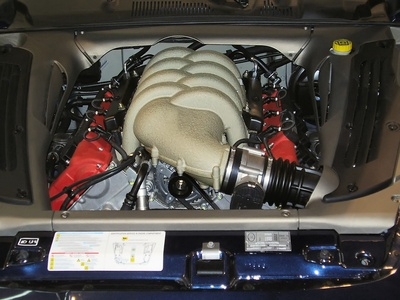
Headers in an internal combustion engine remove burnt exhaust gases from the combustion chambers. The easier it is for exhaust gases to leave the cylinders, the faster and easier it is for the engine to suck in fresh air and fuel for the next round of combustion, and the greater the power production. Generally, long headers provide better performance, but drawbacks certainly exist.
Headers are relatively simple parts. A header is the collection of tubes that connect to the exhaust valves of the cylinders. The header channels the exhaust gas to the catalytic converter, from which it is fed into the muffler and finally exits the car. In V-configuration or boxer-type (flat-configuration) engines, cylinders are on two separate banks and are too far away to share a common exhaust pipe system. Such engines have two sets of headers, the gases from which may or may not ultimately be fed into a single tube further downstream.
To understand the importance of headers and the rest of the exhaust system, we must familiarize ourselves with a concept called "back pressure." Back pressure is the resistance caused by the gas that has yet to leave the pipes in the exhaust system. The engine has to work against this pressure in order to push the gases out of the cylinders at the end of each combustion cycle and make room for fresh air. The greater the back pressure, the harder the engine has to push and the more of its power it must use for this wasteful activity as opposed to moving the vehicle forward.
As a general rule, long tube headers provide better performance, as they keep the exhaust gases from various cylinders separate longer and provide a less restricted path for each cylinder. In a short header, the individual pipes from each cylinder will join relatively early and merge into a single thicker pipe. In a longer header, the individual pipes will join further downstream; by the time the gases reach the thicker single pipe, they will have gathered sufficient velocity to push against the high pressure gas in the thick joined pipe with greater ease. This is the basic reason for the ease of breathing and greater power provided by long headers.
While long tube headers will generally provide better performance, it should be kept in mind that their installation and integration into the rest of an existing exhaust system is a difficult task. Sometimes there is simply not enough space to properly install long headers; also, squeezing tubes into spaces that have been designed to be vacant can lead to overheating of critical engine components. The headers themselves and the installation process are costly; if the units have been poorly designed, they can lead to power loss. In addition, changing engine components such as headers often voids the auto manufacturer's warranty and can force you to foot the bill in case of an engine failure.